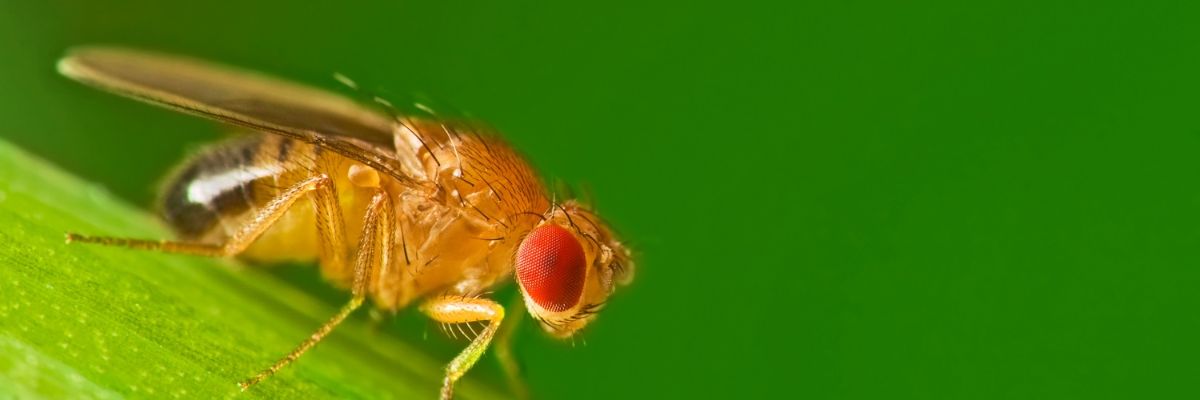
Unravelling the mystery of biodiversity – with a little help from the fruit fly
20. 02. 2024
While there are 2.1 million described animal species in the world, about one quarter of them face extinction. Which ecological communities will survive? Are those with a more diverse constitution more resilient? And how does nature actually maintain its diversity? The answers to these questions are being sought by entomologist Jan Hrček from the Biology Centre of the CAS, who was the only Czech to receive the prestigious ERC Consolidator Grant in 2023. The story (below) about his research was published in the quarterly A / Magazine of the Czech Academy of Sciences.
The Nostromo spacecraft is heading back to Earth from its mission. As the crew is having dinner, one of the astronauts starts to choke, mid-conversation. In a flash, he finds himself in terrible convulsions. After a few seconds, the head of an unknown creature emerges out of his abdomen... As soon as the creature emerges out of the already lifeless human body in full view of the horrified crew, it disappears into the bowels of the ship, where it lies in wait for its next victims.
The Alien movie (1979), which this scene hails from, is considered a sci-fi classic. Its main “villain” is not all that fictional, though. In nature, parasitoid wasps behave similarly – they lay eggs in their host, which for some time, just like the astronaut in Alien, behaves as usual and looks completely normal. In the meantime, the wasp larva develops in its guts. Once fully developed, the wasp then flies out of the body, resulting in the death of the host.
A tough break, isn’t it? But these parasitoids, as the organisms that grow inside the host and eventually end up killing it are called, can be useful, too. That is, when it is pests that are the object of their interest.
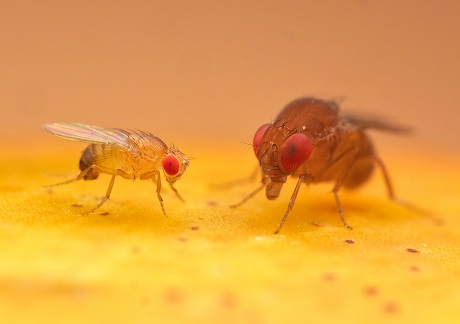
There are considerable differences between different species of fruit flies.
“An ecosystem that is diverse can better perform its function and is more resilient to fluctuations. Its main advantage is substitutability – species are, to some extent, replaceable within it.” – Jan Hrček
Born to kill
“In greenhouses, parasitoid wasps are commonly employed to kill aphids. They are capable of finding them better than any of us. They are literally compelled to find a host, otherwise they would not be able to reproduce. They’re a kind of killing machine. Their way of life is fascinating,” says Jan Hrček from the Biology Centre of the CAS.
This type of wasps captured the researcher’s interest right from the beginnings of his scientific career. These unscrupulous killers appear in all his research projects, and the one for which Hrček received the prestigious ERC Consolidator Grant in 2023 is no exception. This time, however, the researcher is investigating the delicate relationship the parasitoid wasp maintains with the fruit fly. His research has taken him all the way to the Australian rainforest.
With the help of these inconspicuous winged creatures, the biologist is planning to unravel a hitherto unsolved mystery – how species diversity in nature is connected to intraspecific variation, i.e., genetic diversity.
“Predators, parasites, competitors... That every animal has to face all sorts of pressures within its environment seems to be a factor that helps maintain intraspecific diversity. There is, then, likely a causal link between the diversity within a species and the richness of the community that lives around it. However, no experiment has proved this assumption yet,” the entomologist says.
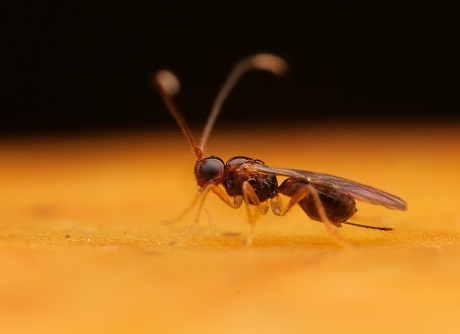
The parasitoid wasp which attacks the larvae of the fruit fly.
He and his research team now intend to change that. And in addition to wasps and fruit flies, integrating ecology with evolution should also help him in this endeavour. Only the combination of these two previously separated fields will be able to provide an explanation of exactly how diversity is maintained in nature, Hrček postulates.
“The diversity of nature is amazing. But we still don’t know how the scope of it is even possible. How is it that individual species just don’t devour (and thus eliminate) each other?” – Jan Hrček
Accelerated evolution
“Ecology examines how relationships between multiple species of organisms work, while evolutionary biology deals with the maintenance of diversity within a single species. But it appears to be a case of connected vessels – species diversity promotes genetic diversity and vice versa,” Hrček believes.
Moreover, new scientific findings show that evolution is happening much faster than experts previously postulated. In fact, certain characteristics of an organism can change in just a few generations. Not in such a fundamental manner that, for instance, a fly becomes a mouse in a mere few years… Nevertheless, these are significant changes that must be taken into account in ecology.
“A species may look the same on the outside, but the inner workings of its immune system, metabolism, and the like, can change. For example, in fruit flies, fecundity can double in a few generations, and that can already shake up the coexistence of populations of different species,” the biologist points out.
To the average layperson, most of these types of changes are hardly perceptible, but some of the consequences of accelerated evolution can be noticed. For instance, in African elephants. They have changed as a result of pressure from poachers, who have long hunted these mammals in large numbers for ivory. How? Within a couple of decades, the female elephants began to be born without tusks.
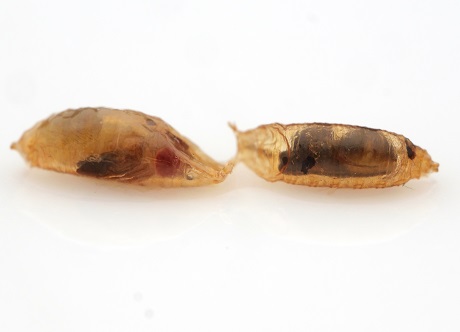
Fruit flies, Drosophila (left) don’t have it easy. Their larvae are attacked by parasitoid wasps (right) – the wasps lay eggs in them, which then develop in their viscera. The two pupae in the photo may belong to the fruit fly, but it is the parasitoid wasp that will soon emerge from the one on the right.
From fruit fly to antelope
They mill around fruit salads and juice boxes. On hotter days and in early autumn, it’s as if entire households have been colonized by pesky pomace (or vinegar) flies, as the fruit flies are popularly called. So why did a Czech scientist decide to study the Australian ones instead?
“In our climate and region, the individual species of fruit flies alternate during the season. The climate is more stable in the rainforest, forcing the same species to survive and cohabitate together for a long time, which is a prerequisite factor for my research,” Hrček explains.
This is by no means the first time that the fruit fly has been the focus of science. It is commonly used as a model organism in genetics research. No wonder – it is compact, easy to breed, and has a short generation time. In the lab, hundreds of lines of fruit flies can easily be maintained simultaneously. In addition, entire swarms of their natural enemies, the wasps, can be fit into the small space. Which is certainly not the case with antelopes and lions.
“Hostile relationships, where one species eats another [predation], are common in nature. They kill and consume each other yet can survive side by side. To figure out how this is possible, I’ve been looking for a system that could be manipulated, taken apart, and put back together, and at the same time had meaningful diversity,” Hrček explains.
That is why he ended up choosing five species of Australian fruit flies and five species of parasitoid wasps, their natural enemy. In his opinion, such an ecological community offers a good number of relationships to explore. And the results should also have relevance to the aforementioned lions and antelopes, too.
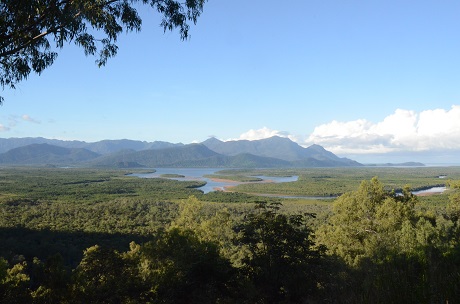
The Australian rainforest.
“What I’m trying to do is uncover a general principle that should work across the board in ecology, so that it can be transferable to species threatened by extinction,” the biologist adds.
Banana extravaganza
A dark brown, overripe banana mashed up with baker’s yeast – the gourmet dream of every fruit fly. This is the “goodie” that Hrček’s team is luring the hungry flies in with in the rainforest on the north-east coast of Australia.
However, the scientists have to supply the banana mix with a rain canopy and a mesh cage to prevent the delicacy from attracting other foodies. The hungry fruit flies don’t wait long, swooping down and happily laying their eggs into the bait.
“Then, our time comes. We take our tweezers and pick out about five-millimetre-long pupae from the unappealing banana mixture. We send off the samples to the Czech Republic every month,” the entomologist says.
The pupae travel by mail – packed in alcohol in lab trays that can hold exactly 96 of them in tiny test tubes. In the laboratories at the Biology Centre of the Czech Academy of Sciences in České Budějovice (Czech Republic), researchers then extract DNA from the pupae and use the PCR method to figure out which species of fruit fly it is, whether it has been infected by a parasitoid wasp, and if so, exactly which species.
The researchers will also bring back many fruit fly and parasitoid wasp lines from the individual species from Australia and then embark on an experiment to help answer a key question: does species diversity help maintain genetic diversity? And does this hold true vice versa as well?
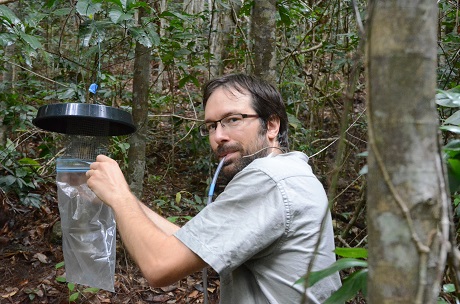
Jan Hrček collecting fruit fly larvae in the rainforest of north-eastern Australia.
Tent city
“In the lab, we will create several microcosms with different numbers of species of fruit flies and parasitoid wasps and with different genetic variations within a species. We will then observe which community lasts the longest,” Hrček explains.
How should we imagine such a microcosm? Surprisingly, like an ordinary tent for one to two people, covered in chiffon to prevent the insects from simply flying off. The researchers will set up four types of tents in a climate room to assure and maintain a constant temperature and humidity. Each type will represent one of the possible scenarios that can occur in nature: they will herd a large number of species into one tent, only a few into another, a low number of lines of one species into a third, and a higher number of lines into a fourth.
In the tents, there is no need to mimic the forest environment by adding plants, for instance – the fruit flies are more than satisfied with the trays of food and they can make themselves at home anywhere. The wasps do not suffer in the presence of their lovely hosts either.
The two animals will stay together in the tent city for about half a year. The scientists will only occasionally replace old fruit with a more appealing selection. And then, at last, the great insect census!
“That is when we’ll find out which environment they did best in, that is, which of the simulated situations was the most stable. We expect that in the tents with lower genetic diversity, more species will die out in the tested amount of time, and vice versa,” the biologist estimates.
The pitfalls of the rainforest
But before the researchers can pitch the tents, they need to acquire enough tenants for them in Australia. They have one to two years to handpick the fruit fly pupae in the local rainforest; Hrček himself has so far delved into the field work for two months towards the end of spring 2023.
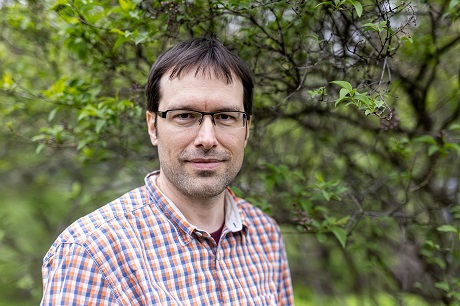
Jan Hrček from the Biology Centre of the CAS was awarded the ERC Consolidator Grant in 2023.
His wife and three children, there with him at the time, helped him with carrying the bananas and baker’s yeast into the forest. The Australian rainforest is safe, unlike the one in Papua New Guinea, where the researcher spent almost a year and a half studying the feeding relationships of leaf-eating caterpillars and their parasitoids years ago.
“Papua has a high crime rate. Our research station was even raided one night by a local gang and robbed,” the entomologist recalls. The robbers graced the base with an unexpected visit just after Christmas, during which Hrček had prepared a total of six backups of data from his research so far – just in case. “We were planning to take them to the post office the next day, but the thieves had taken everything. All except the external disk, which was left behind on the table. I guess they didn’t know what it was, and that’s the only reason why we ended up having one backup left,” he adds with a smile. In short, science can be an adventure and sometimes a little dangerous, too, even if the dramatic events of Alien are – hopefully – not imminent.
|
Mgr. Jan Hrček, Ph.D. Hrček studied entomology at the Faculty of Science of the University of South Bohemia in České Budějovice, Czech Republic, where he also received his PhD. He completed a three-year postdoctoral fellowship in Oxford, UK, in the laboratory of one of the world’s top biologists, Charles Godfray. He is the head of the Laboratory of Experimental Ecology at the Institute of Entomology, Biology Centre of the CAS. He specializes in molecular ecology and the interactions between insects and their natural enemies. In 2016, he was awarded the J. E. Purkyně Fellowship for promising scientists, and a year later, he received the Otto Wichterle Award. |
You can read the article (in Czech) in the A / Magazine, published by the Czech Academy of Sciences.

3/2023 (version for browsing)
3/2023 (version for download)
Prepared by: Radka Římanová, External Relations Division, CAO of the CAS
Translated by: Tereza Novická, External Relations Division, CAO of the CAS
Photo: Shutterstock; Phil Hönle; Jan Hrček’s archive; Jan Malý The text is released for use under the Creative Commons licence.
The text is released for use under the Creative Commons licence.
Read also
- A trapped state: The pandemic impact on public attitudes, trust, and behavior
- Aerial archaeology: Tracing the footsteps of our ancestors from the sky
- Archaeologists uncover ancient finds along Prague Ring Road
- Our microbiome largely depends on what we eat, says microbiologist Michal Kraus
- The ABCs of writing: Why did its invention mark a turning point for humankind?
- We learn, remember, forget… What can memory actually do? And can we outsmart it?
- New Center for Electron Microscopy in Brno opens its doors to global science
- The hidden lives of waste: What can we learn from waste workers and pickers?
- A unique lab is hidden right beneath Prague’s Vítkov Hill
- Renewables are a strategic investment in European security, scientists say
The Czech Academy of Sciences (the CAS)
The mission of the CAS
The primary mission of the CAS is to conduct research in a broad spectrum of natural, technical and social sciences as well as humanities. This research aims to advance progress of scientific knowledge at the international level, considering, however, the specific needs of the Czech society and the national culture.
President of the CAS
Prof. Eva Zažímalová has started her second term of office in May 2021. She is a respected scientist, and a Professor of Plant Anatomy and Physiology.
She is also a part of GCSA of the EU.